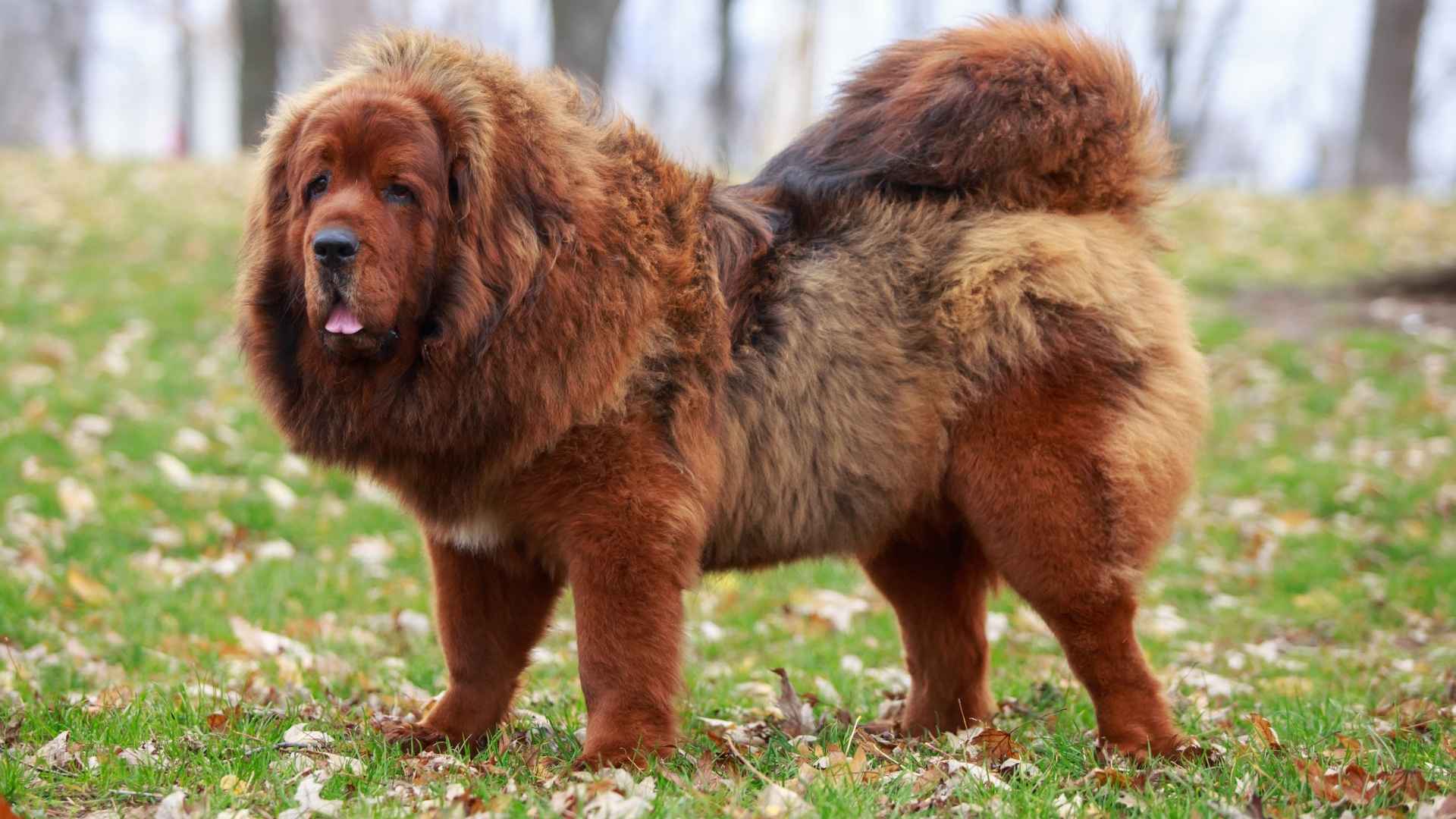Big dogs come with big personalities, and even bigger space requirements. While these XL breeds are often beloved for their loyalty, strength, and majestic appearance, they aren’t the type to thrive in cramped quarters. Originally bred for roles like guarding, herding, or pulling heavy loads, many of these gentle giants still carry the energy and instincts that require ample room to roam. Without proper space, their natural drive can lead to restlessness or behavioral issues.
A spacious yard isn’t just a luxury for these breeds, it’s a necessity. Many of them aren’t content with a daily walk around the block; they need room to stretch their legs, patrol their territory, or simply sprawl out under the sky. Whether it’s for physical exercise, mental stimulation, or fulfilling a guardian’s instinct to survey their surroundings, extra-large dogs truly benefit from an environment that matches their size.
If you’re considering welcoming one of these powerhouse pups into your life, be sure your backyard is ready to meet their needs. The breeds ahead aren’t just big in body, they’re big in spirit, and they thrive in homes with yards as expansive as their personalities.
XL Dog Breeds for Spacious Yards
1. Anatolian Shepherd
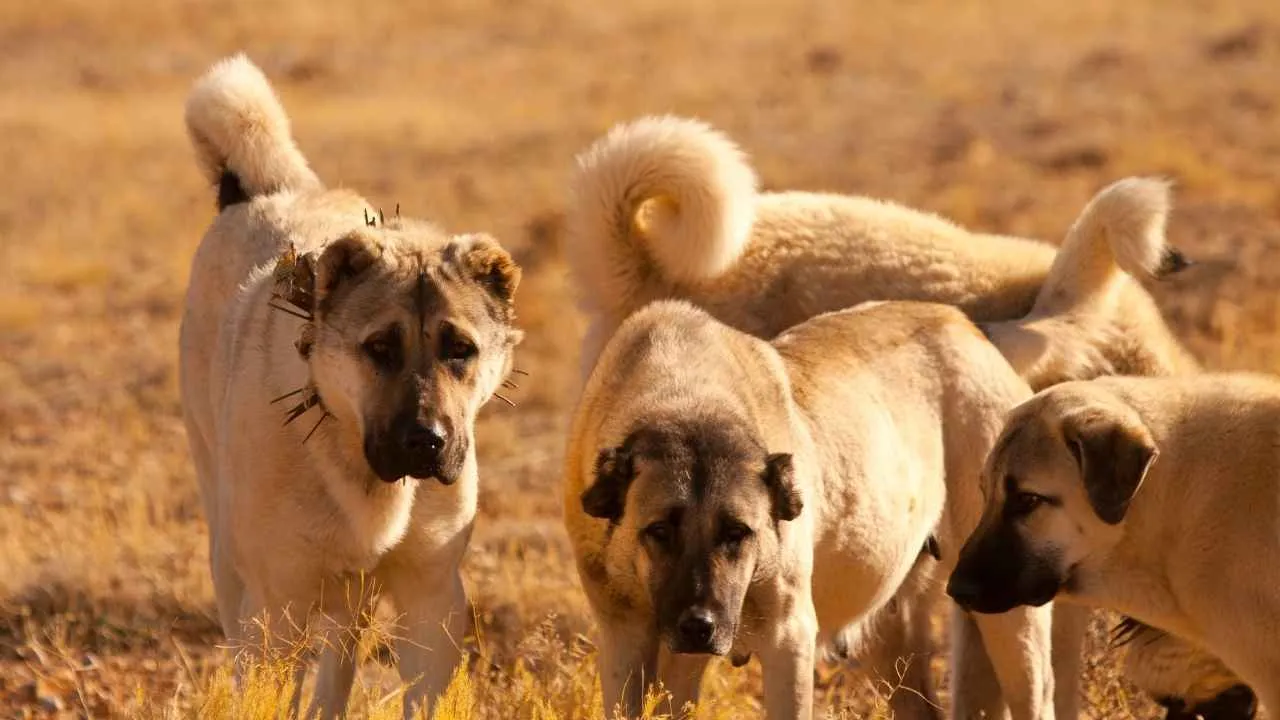
Powerful, protective, and incredibly self-reliant, the Anatolian Shepherd is one of the oldest and most respected livestock guardian breeds. Originally developed in Turkey, these dogs were bred to monitor and defend herds without direct human supervision, traits that remain deeply rooted in their behavior today.
Weighing between 80 and 150 pounds and standing up to 29 inches tall, the Anatolian has a leaner build and longer legs than many similar breeds, giving it an unexpected speed and agility for its size. They are one of the tallest dog breeds.
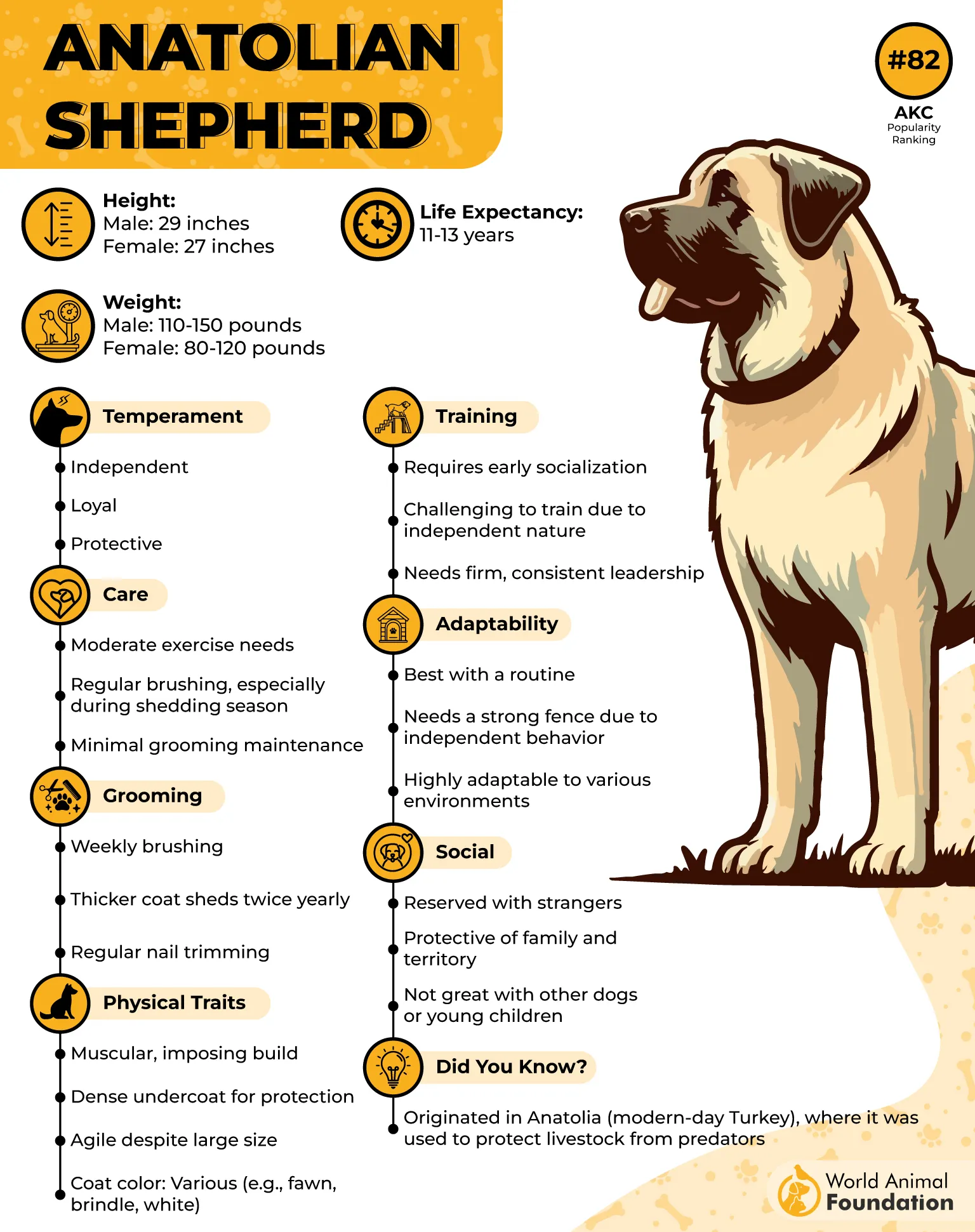
Exercise and Living Environment
These giant dog breeds need a spacious, securely fenced yard where they can patrol, observe, and burn off energy on their own terms. They are not well-suited to apartment life or confined spaces. While not hyperactive, they do require daily physical activity and mental stimulation to prevent boredom.
As deep-chested dogs, Anatolians are also prone to bloat, so exercise should be scheduled away from mealtimes. A large yard provides the freedom they need to move naturally, which supports healthy development and helps prevent joint-related conditions such as hip or elbow dysplasia.
Fact: Despite their imposing presence, Anatolian Shepherds prefer to intimidate rather than confront, making them highly valued as non-aggressive, deterrent guardian dogs on farms and ranches.
2. Leonberger
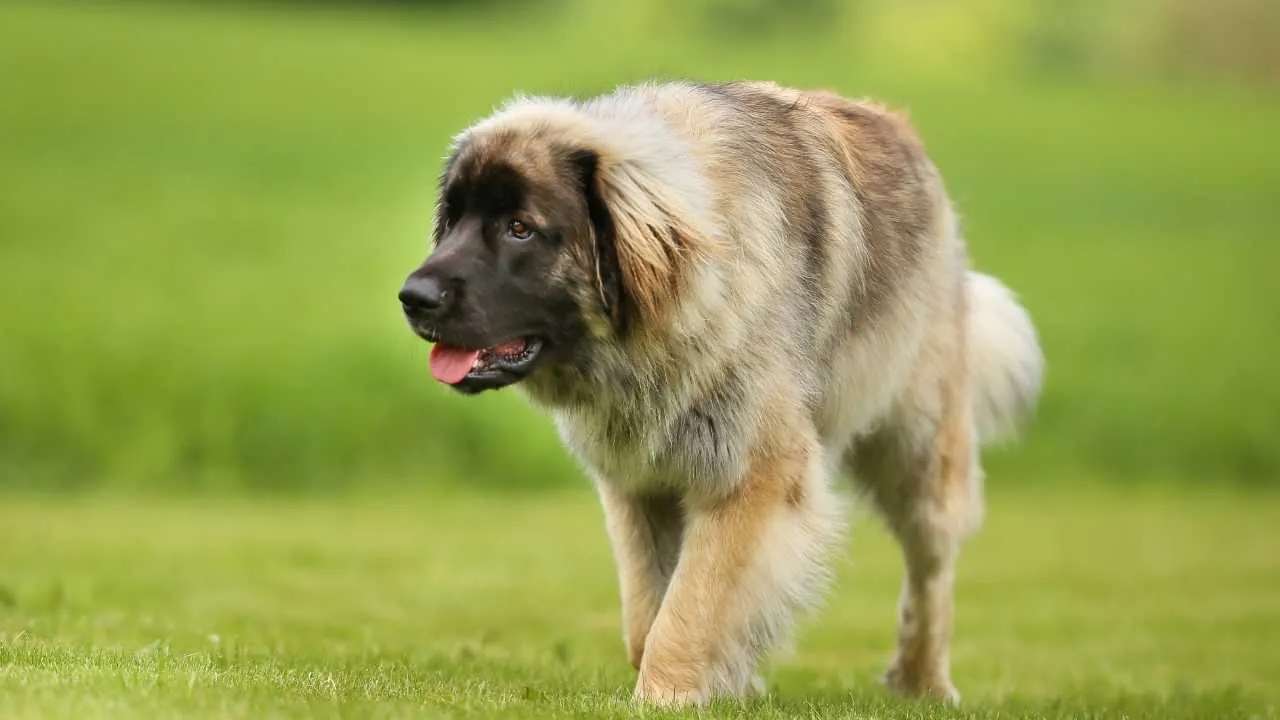
Regal yet rugged, the Leonberger is a giant breed that effortlessly balances strength with affection. Originally bred as a companion dog for European nobility, this lion-like canine eventually took on more demanding tasks, earning its reputation as a dependable farm and working dog.
Weighing well over 100 pounds, the Leonberger impresses not only with its size but also with its thick double coat, calm demeanor, and eagerness to be part of family life. Their devoted nature and gentle temperament make them wonderful companions in homes that can meet their needs.
According to PetMD, Leonbergers are affectionate and fun-loving with their loved ones. With proper socialization, they tend to get along well with children, are friendly toward other dogs, and are generally accepting of strangers.
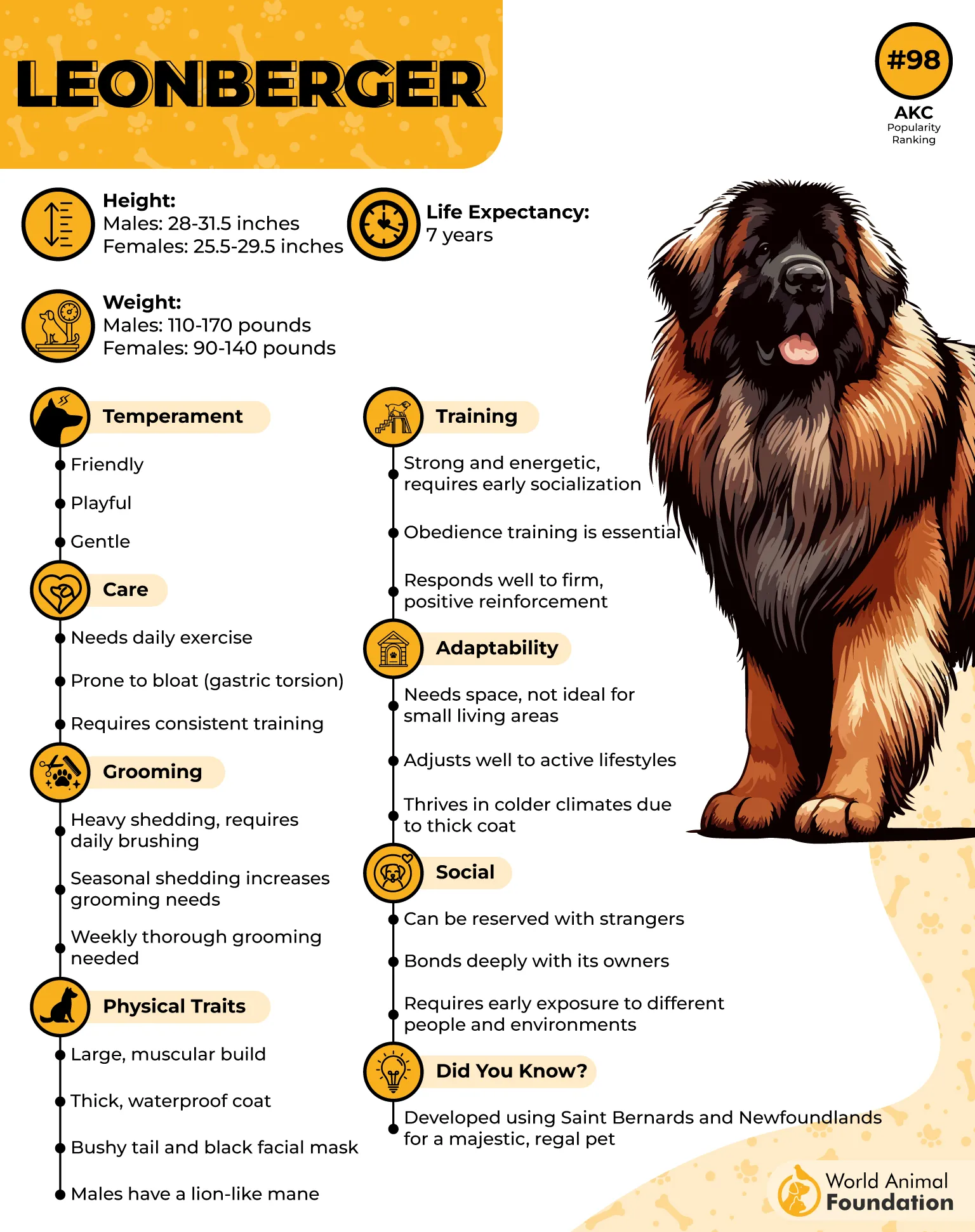
Exercise and Living Environment
Leonbergers thrive in homes with large, securely fenced yards that allow for daily exploration and activity. While they aren’t overly hyper, they require regular exercise to maintain muscle tone and prevent boredom.
Because they form strong bonds with their people, they don’t do well when left alone for long periods and are best suited to families that can spend consistent time with them. City living or apartment setups are a poor match for this breed, these dogs need space, structure, and social interaction to be at their best.

Fact: The Leonberger was first bred to serve as a canine companion to European royalty before transitioning into a reliable all-purpose working dog.
3. Neapolitan Mastiff
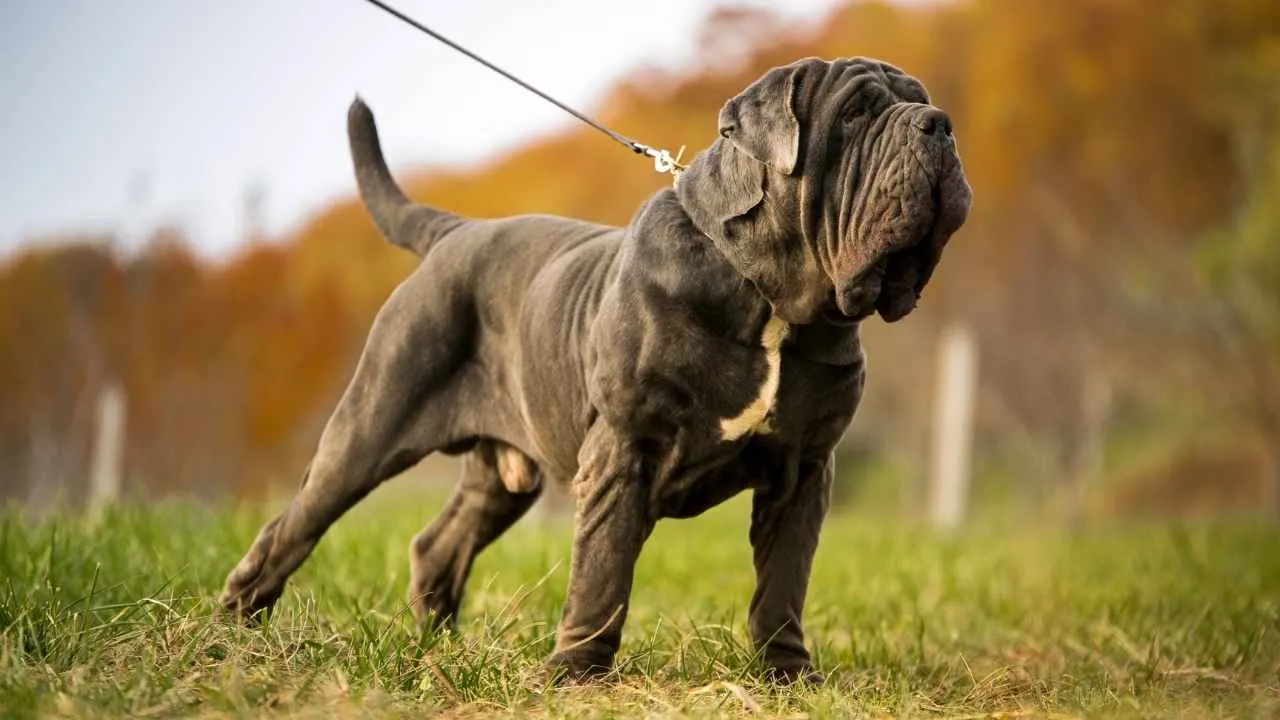
With their massive frame, sagging skin, and unmistakable wrinkles, the Neapolitan Mastiff is both awe-inspiring and unforgettable. These ancient guardians trace their roots back to the Roman Empire, where they were prized for their formidable presence and loyalty.
Weighing between 110 and 150 pounds and standing up to 31 inches tall, this breed commands attention not only for its size but also for its noble, steady temperament. The AKC describes the Neapolitan Mastiff as a noble, devoted, and observant breed.
While they are deeply affectionate with family, they remain reserved and watchful around strangers, making them excellent natural protectors.
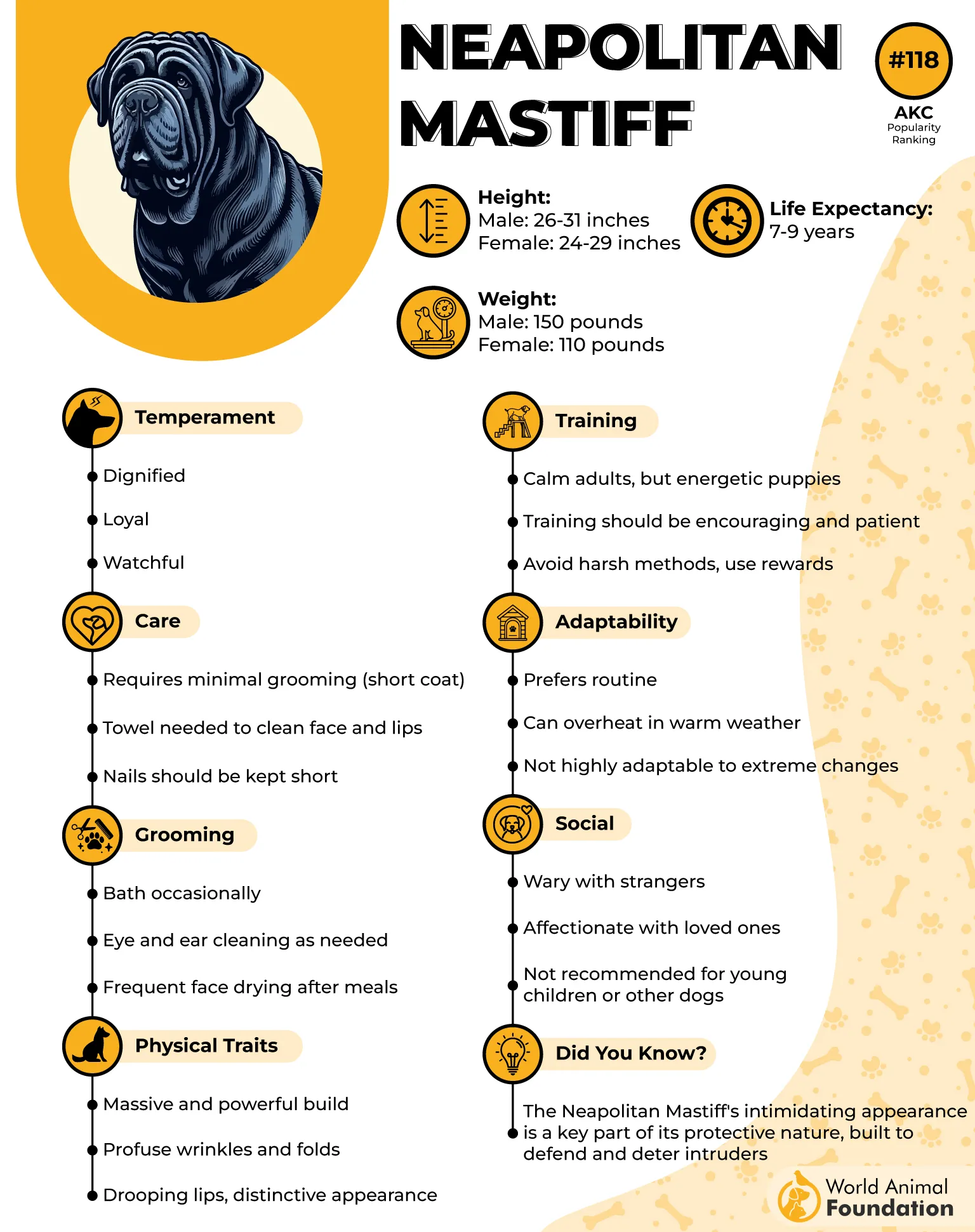
Exercise and Living Environment
Despite their imposing size, Neapolitan Mastiffs have moderate exercise needs. A spacious, securely enclosed yard is essential, not for sprinting laps, but for slow, deliberate strolls and lounging with purpose.
They enjoy regular walks and playtime, but are not built for intense physical activity. Without enough space, these mellow giants can become bored or even overweight. Their heavy build and protective nature also mean they’re best suited to homes where they can roam freely and keep a quiet watch over their territory.
Fact: Neapolitan Mastiffs are known for their drooping wrinkles, enormous size, and majestic, ancient-Rome-inspired presence, earning them a reputation as one of the most visually distinctive guard dogs in the world.
4. Tibetan Mastiff
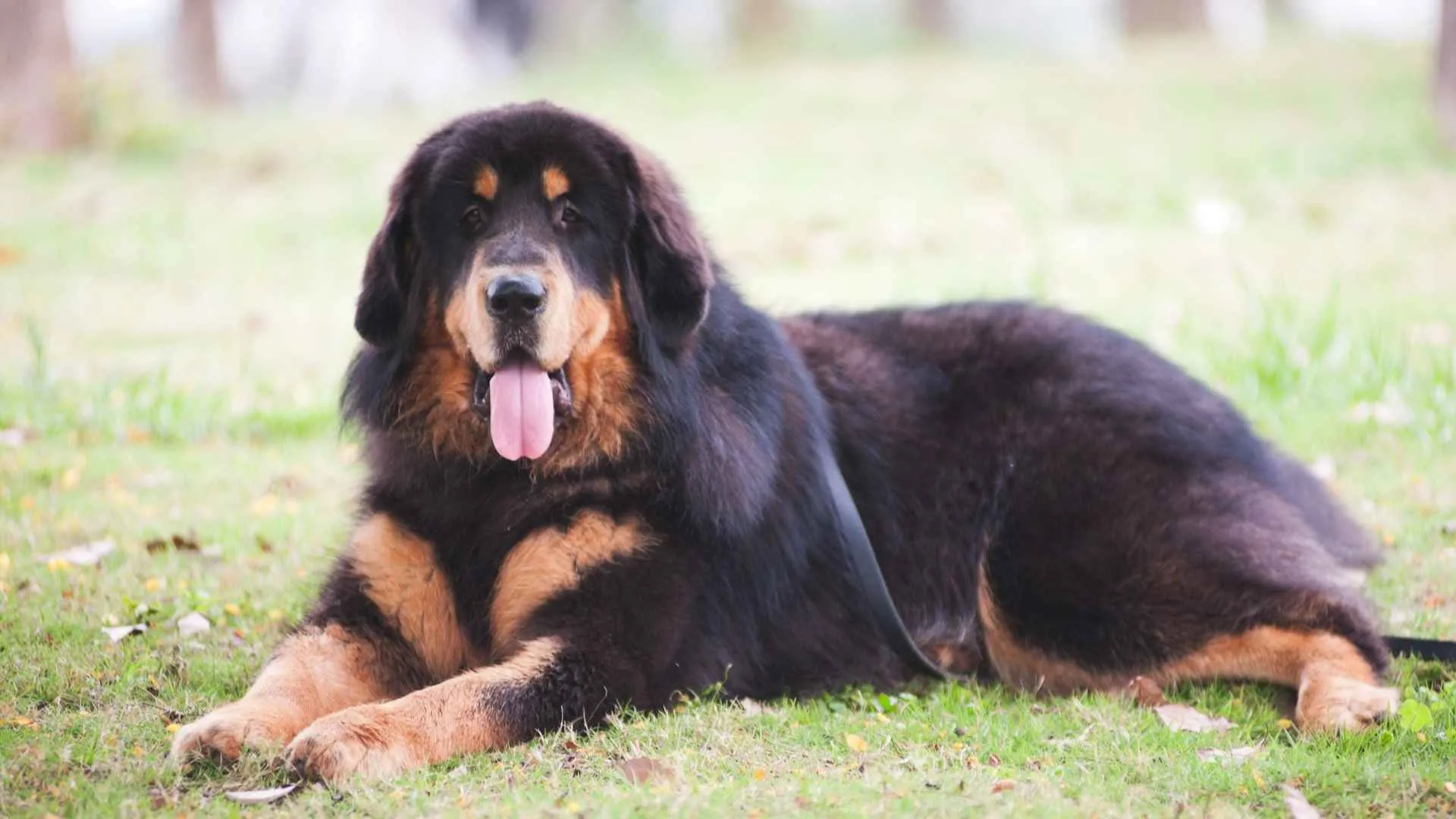
Regal, powerful, and deeply independent, the Tibetan Mastiff is an ancient guardian breed originally used to protect Tibetan monasteries and flocks in the Himalayas. Known for its imposing presence and thick, lion-like coat, this XL dog breed can weigh over 100 pounds and exudes natural authority.
PDSA states, Tibetan Mastiffs might appear intimidating, but they are actually affectionate and devoted dogs that enjoy being close to their humans. With a strong protective instinct and an unwavering loyalty to its family, the Tibetan Mastiff thrives in environments where it can survey its surroundings and make decisions on its own terms.
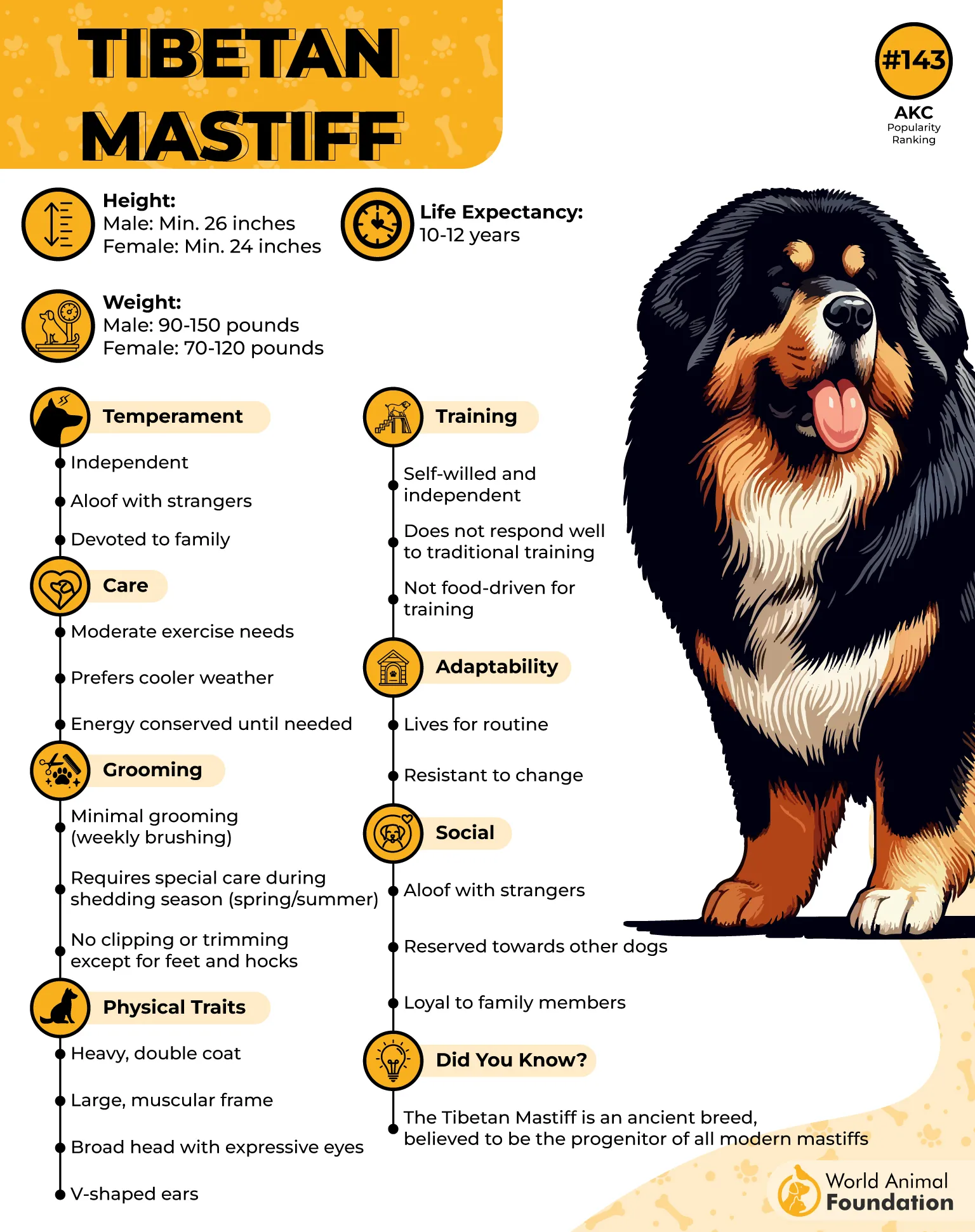
Exercise and Living Environment
Though not a high-energy breed, the Tibetan Mastiff does best with moderate daily exercise and plenty of space to roam. A large, securely fenced yard is necessary for this territorial dog, which prefers to patrol rather than participate in structured games like fetch. Cooler weather brings out its livelier side, making early mornings and brisk walks ideal.
Due to its independent streak and unreliable recall, this breed should never be off-leash in unsecured spaces. A spacious yard not only satisfies its physical needs but also supports its mental well-being, giving it a sense of purpose and control.
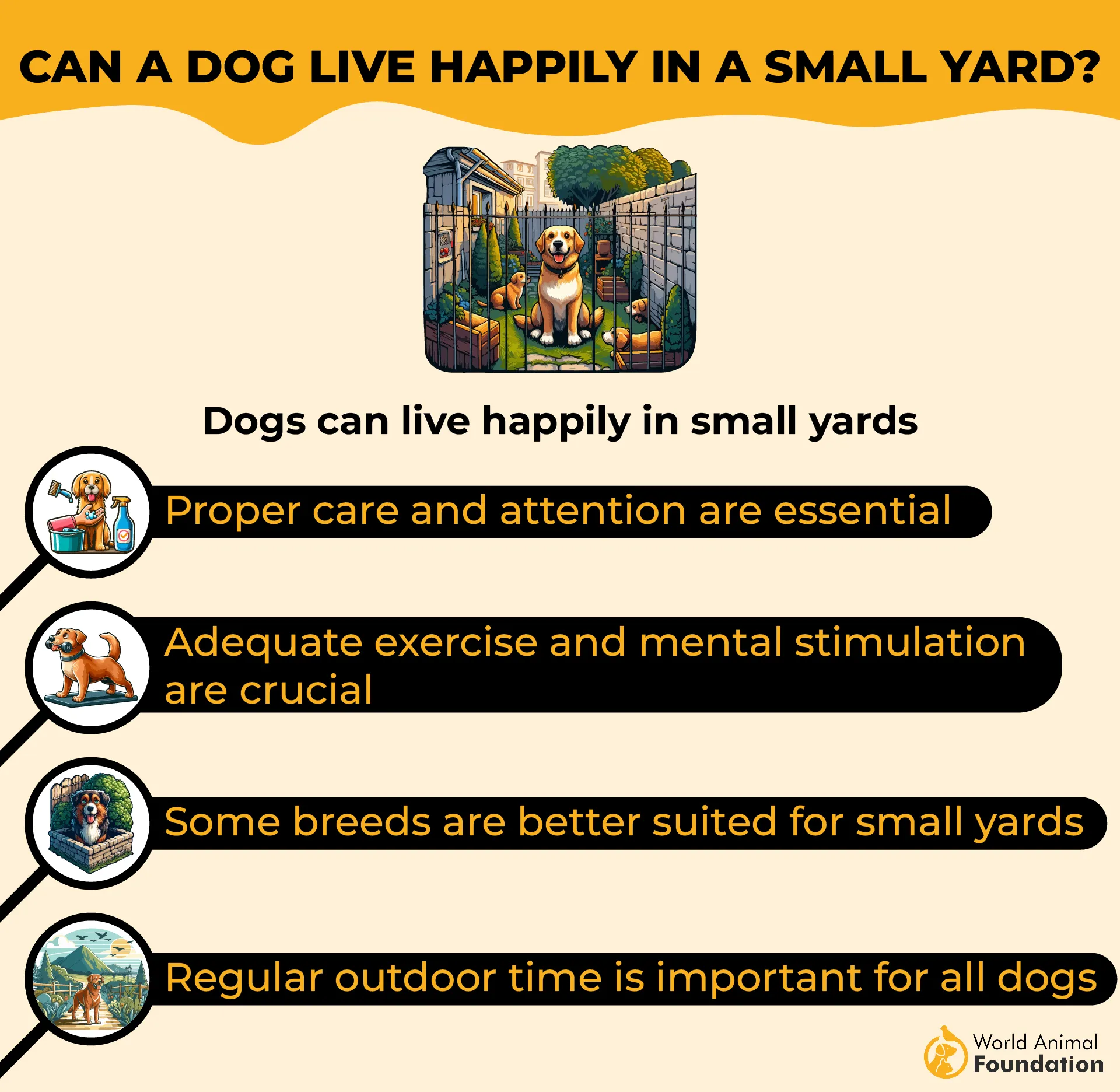
Fact: This large dog breed is a quick learner but easily bored, making it prone to follow its instincts over commands, even with consistent training.
5. Scottish Deerhound
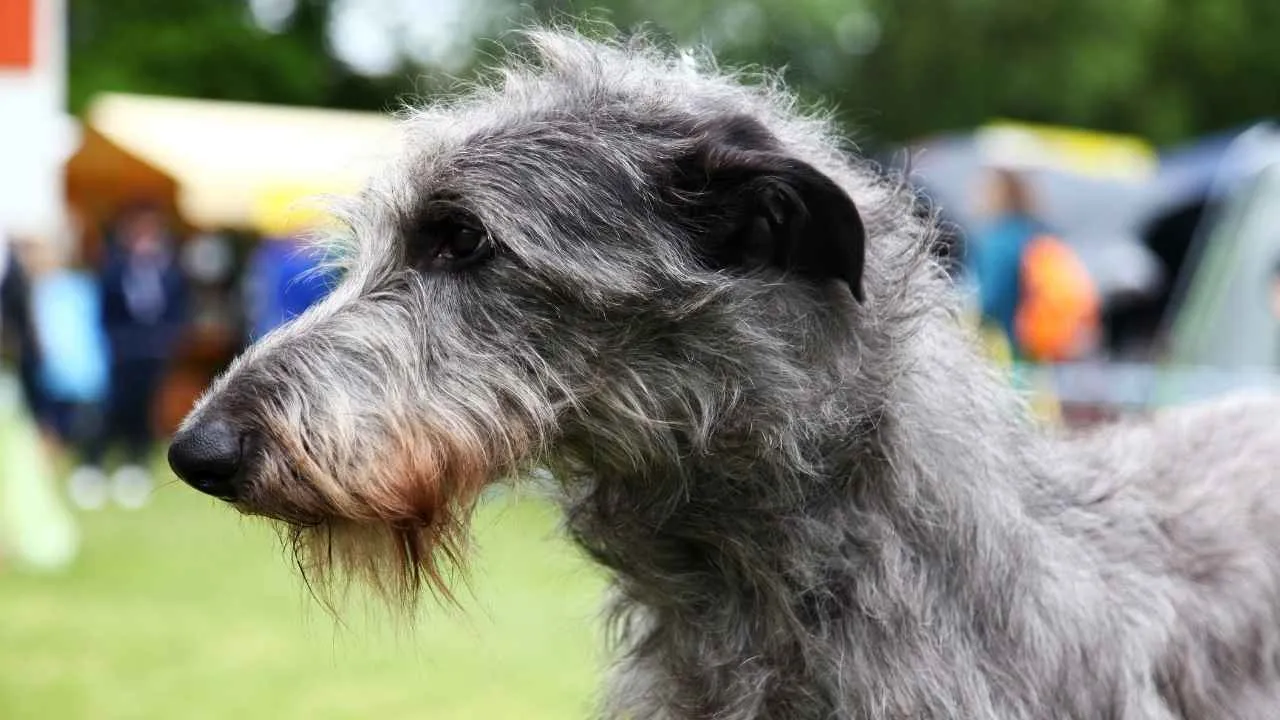
Regal and graceful, the Scottish Deerhound is a towering breed once known as the “royal dog of Scotland.” Originally bred for hunting deer across rugged terrain, this breed combines elegance with athleticism. Though their tall, slender frame may resemble the Irish Wolfhound, Deerhounds are notably more refined in build, particularly in their elongated head and narrow physique.
While they exude a calm, almost lazy presence indoors, they possess a powerful chase instinct that awakens in an instant when movement is spotted. Hills Pet reports that they are approachable, though not overly outgoing, when meeting new people.
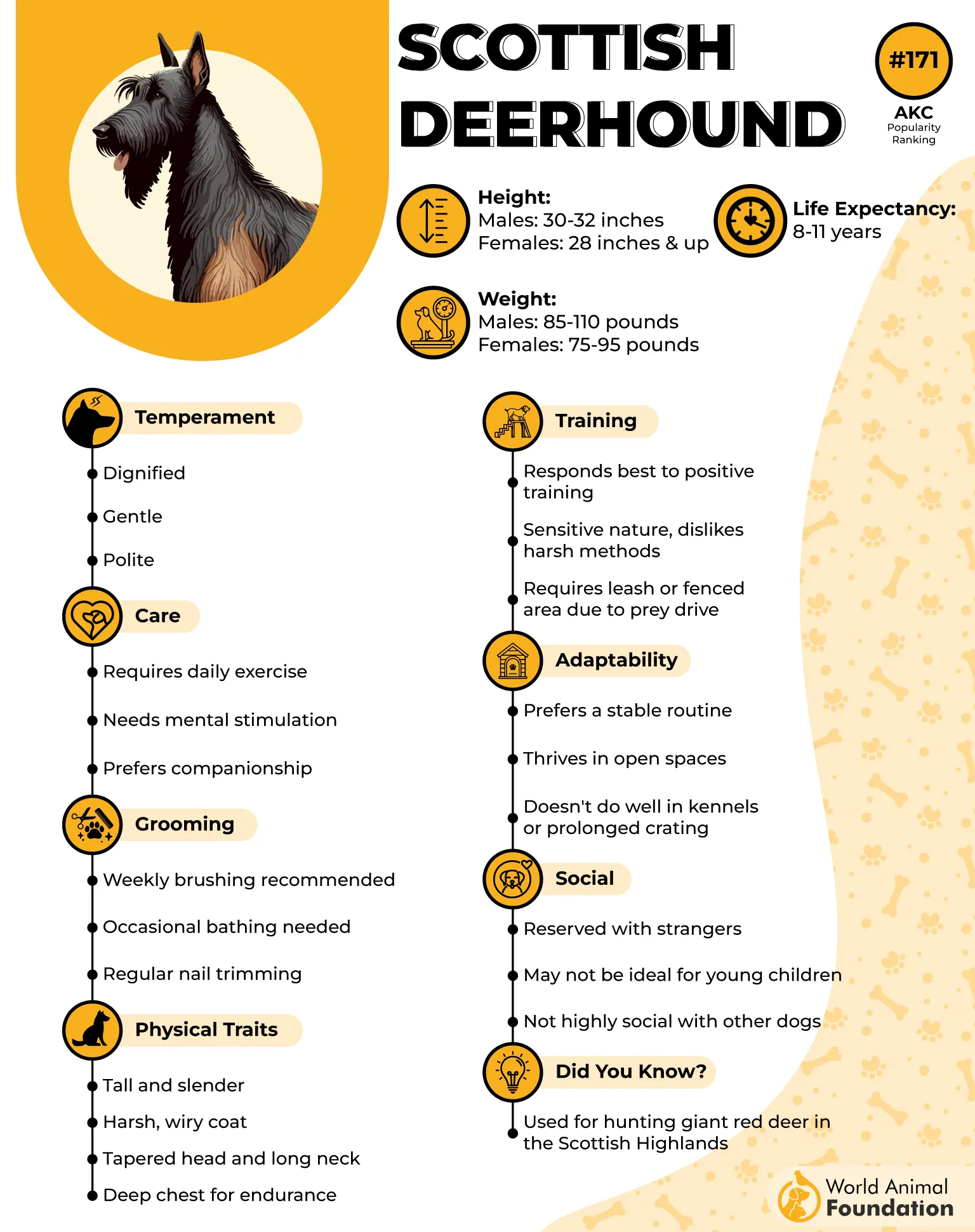
Exercise and Living Environment
Despite their laid-back nature inside the home, Scottish Deerhounds require ample space outdoors to stretch their legs and satisfy their natural desire to run. They thrive in large, securely fenced yards where they can safely pursue sprints.
Electronic fences are not suitable, as their strong prey drive will compel them to bolt after anything in motion. Around 20–40 minutes of daily exercise, including off-leash time in enclosed spaces, is essential to their physical and mental well-being. While sensitive and loyal companions, Deerhounds don’t do well when left alone for long periods.
Fact: Although they love lounging, this large breed transforms into focused, relentless hunters when they catch sight of potential prey, driven by their coursing heritage.
6. Tosa Inu
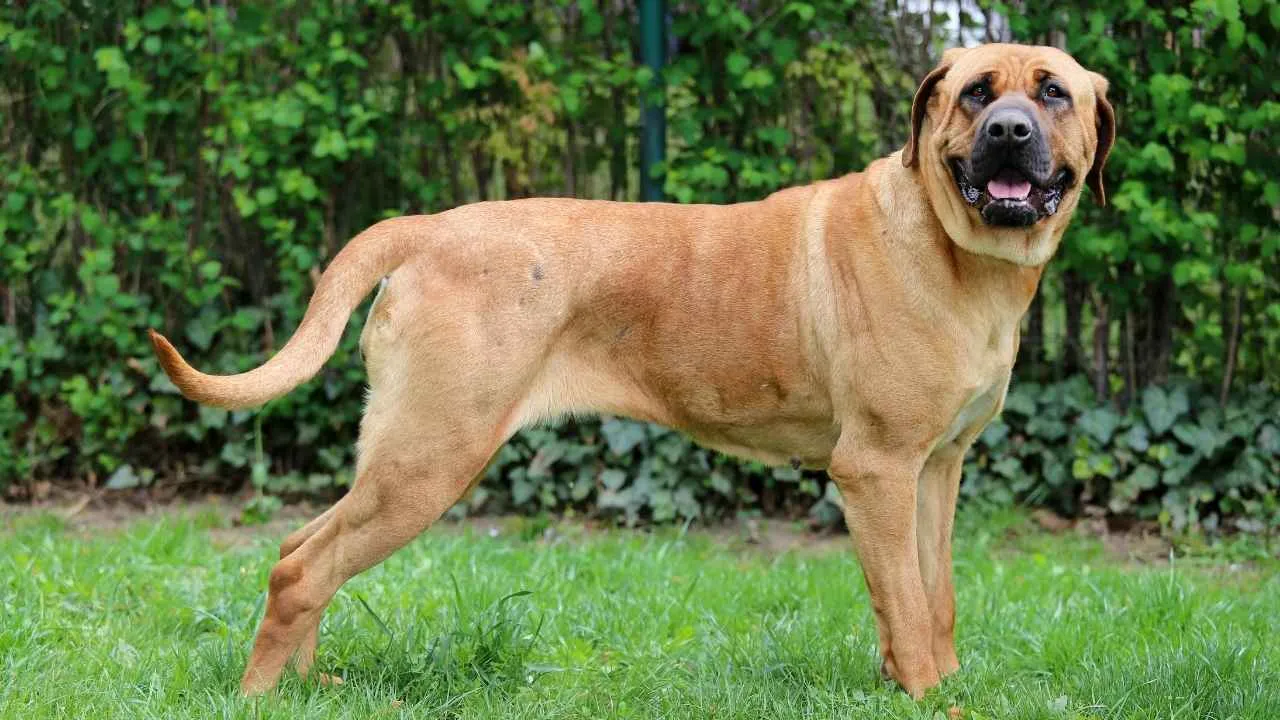
Originally bred in Japan for dog fighting, the Tosa Inu, or Japanese Mastiff, has evolved into a calm and dignified watchdog known for its composed temperament and unwavering loyalty. Weighing between 100 and 200 pounds, this muscular breed exudes quiet strength and discipline.
Tosas are intelligent, alert, and naturally reserved, making them ideal for experienced owners seeking a confident yet unobtrusive guardian. While they are not needy, they do appreciate companionship and routine.
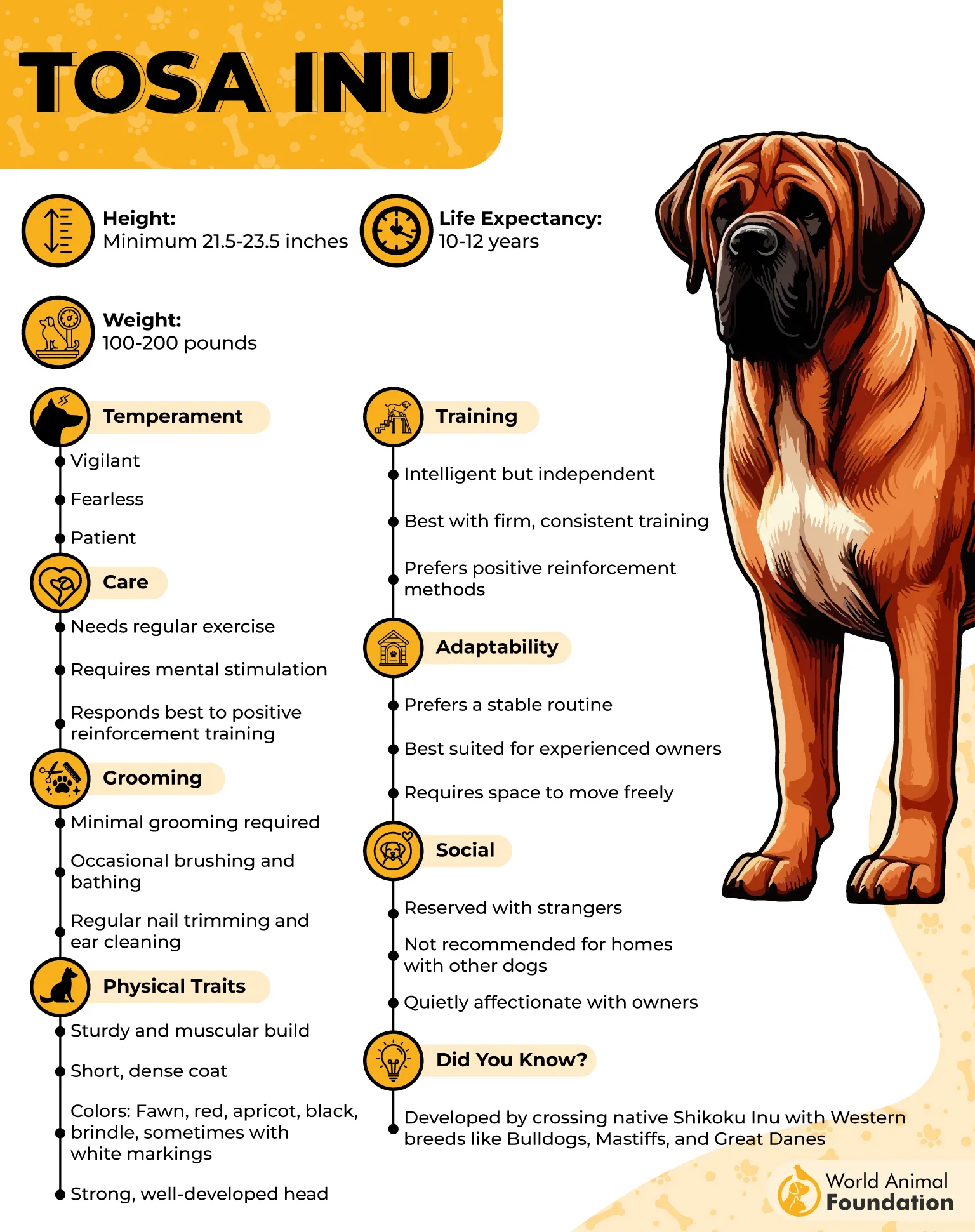
Exercise and Living Environment
Though these massive dogs can adapt to apartment living with proper exercise, Tosa Inus thrive best in homes with spacious, securely fenced yards. Their high energy levels and robust build require at least 45 minutes to an hour of daily activity, including brisk walks or active play sessions.
Because of their short coats, Tosas are sensitive to extreme temperatures, requiring careful exercise adjustments in both winter and summer. Cooler morning or evening walks are ideal during hot months, while shorter, more frequent outings may be better in the cold.
Fact: Despite their imposing size and history, modern Tosa Inus are calm, courageous, and obedient companions, excelling as quiet and dependable watchdogs.
7. Central Asian Shepherd Dog
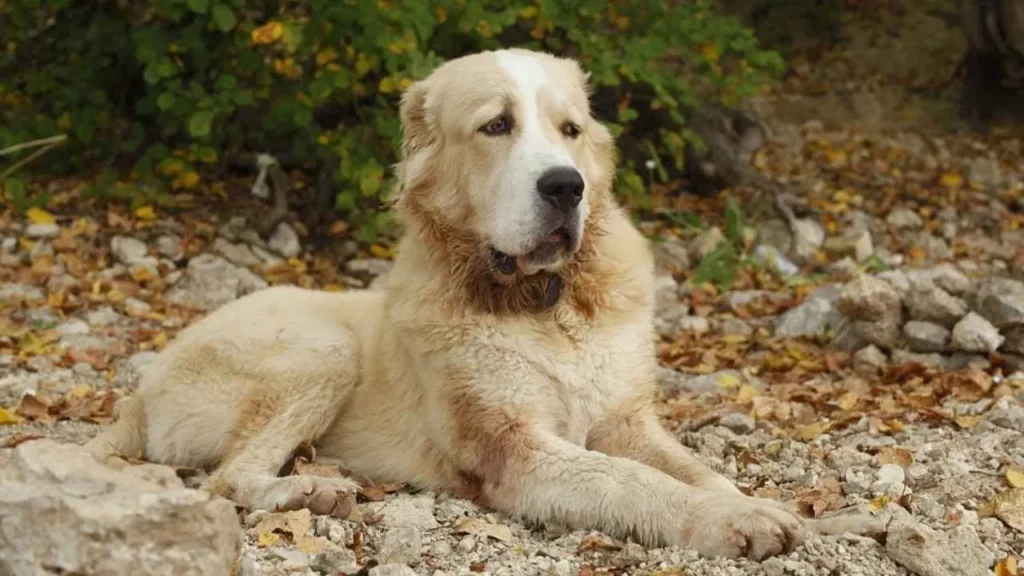
The Central Asian Shepherd Dog (CAS) is an ancient and formidable guardian breed known for its strength, independence, and calm demeanor. Originally bred to protect livestock across vast terrains, this breed is naturally territorial and thrives in environments where it can keep watch over a defined space.
Weighing between 80 and 115 pounds and standing over two feet tall, the CAS combines substantial size with a dignified, self-assured personality. Despite its protective instincts, the breed can be gentle and devoted to family when properly trained and socialized.
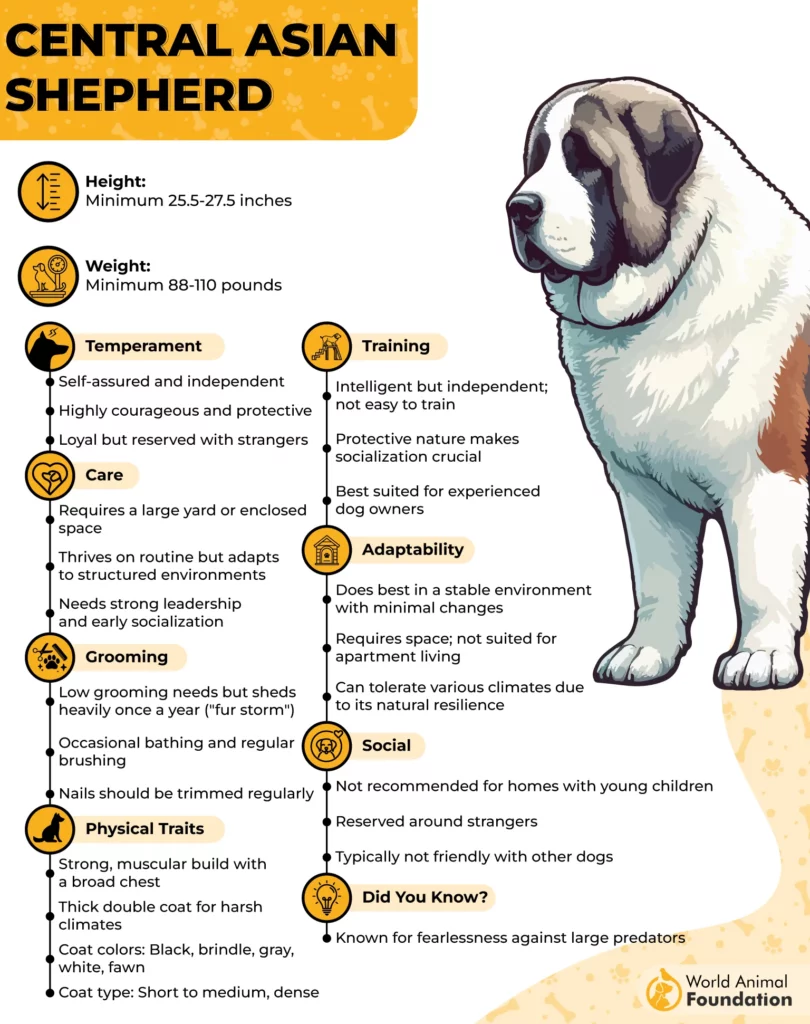
Exercise and Living Environment
This big dog breed requires a large fenced yard; the more space, the better. Though not hyperactive, this breed needs regular physical activity to stay fit and mentally engaged. Long walks, hikes, or endurance-focused tasks are ideal.
Without proper stimulation, a bored CAS may resort to digging or chewing. This breed is not suited for apartment living and does best when it has a job to perform, even if it’s simply watching over its home territory. Leash control and fencing are crucial due to the breed’s independent streak.
Fact: Though often low-energy indoors, the CAS has impressive endurance and excels in long-distance walking or hiking when properly conditioned.
Conclusion
Choosing the right XL dog breed for a spacious yard is about more than just size; it’s about finding a companion whose temperament, instincts, and activity level match your environment and lifestyle. Breeds like the Anatolian Shepherd and Central Asian Shepherd Dog thrive in large, open areas where they can patrol, explore, and fulfill their protective instincts. These breeds aren’t just big, they’re intelligent, independent, and built for purpose, making them ideal for homes with ample outdoor space.
That said, these large dog breeds are best suited for experienced dog owners who understand the importance of structured training, secure fencing, and consistent exercise. While some, like the Anatolian, are naturally territorial and require early socialization, others, such as Bernese Mountain Dogs, blend strength with affection with their calm and gentle nature.
Whether you’re seeking a guardian, a therapy dog, a working partner, or a loyal family member, there are many large dog breeds good for homes with room to roam. With the right environment and care, these gentle giants can flourish, bringing protection, companionship, and heart to homes that are big enough to hold them.


